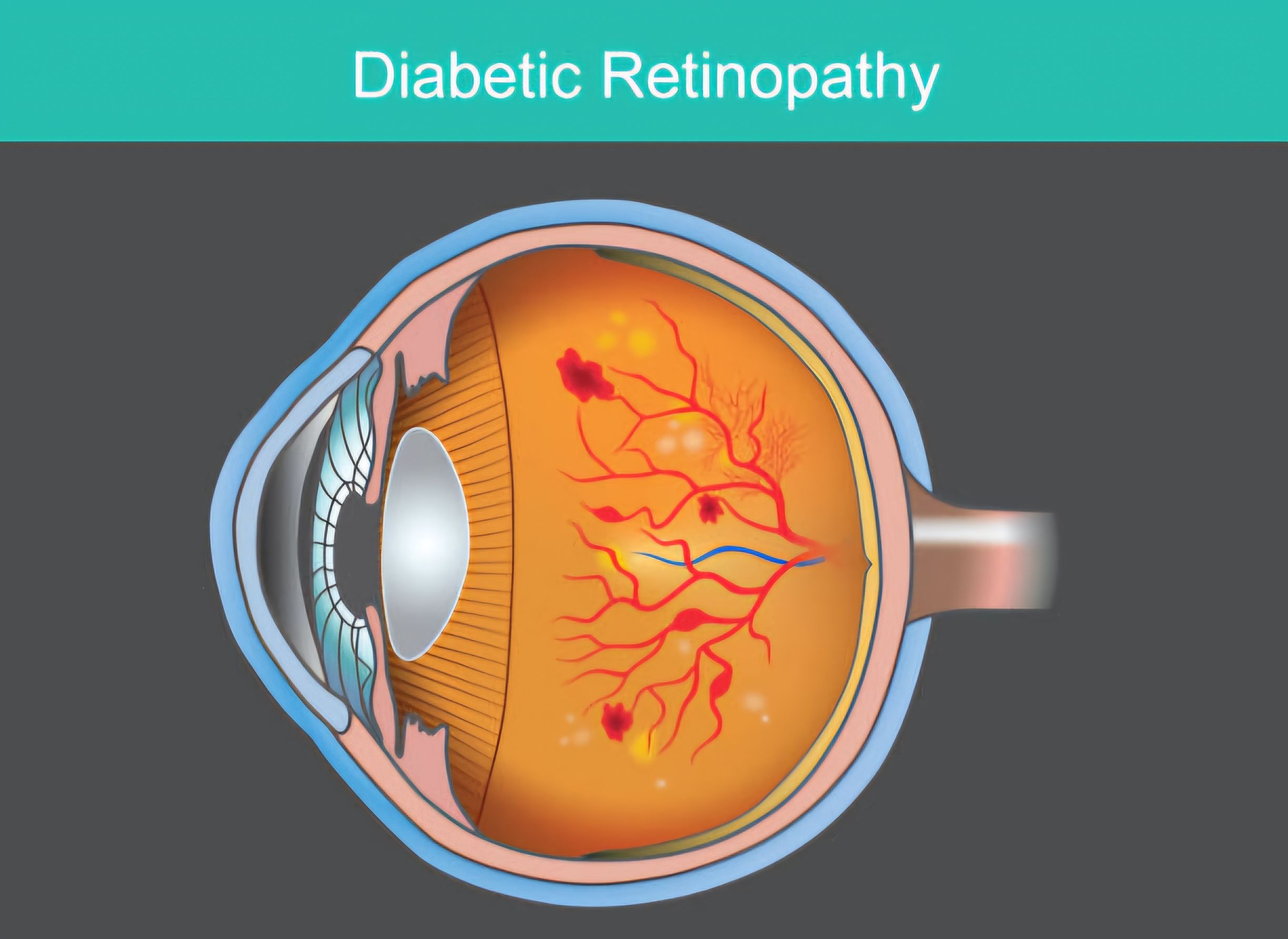Diabetic retinopathy stages and symptoms that need urgent help!
Mrunali Gajbhiye
Health
7 months ago

How normal can life be with diabetes? Blood sugar goes up, comes down, and life goes on. But does it? Does nothing else happen? Diabetes is more than just blood sugar—it can harm you in ways you might not even imagine. It can affect your eyes, too. Your eyes might be silently going through changes you don’t even realize. With each stage of diabetic retinopathy, the severity grows; the more severe the phases, the more issues you may encounter.
You may have heard the name, but what is diabetic retinopathy? High blood sugar levels harm the blood vessels in the retina, the light-sensitive layer in the back of the eye, causing this eye ailment. If treatment is not received, this damage might eventually impair your vision and perhaps result in blindness. So, how do you know if you have it? What are the diabetic retinopathy symptoms? And how do the diabetic retinopathy stages help determine its severity? Most importantly, what can you do about it?
Diabetic retinopathy stages
There are 4 diabetic retinopathy stages, and each one takes time to develop—it doesn’t happen overnight. From minor alterations to severe issues that may result in blindness, the condition worsens over time. Therefore, it's critical to detect it early and receive the right care. There are four diabetic retinopathy stages: proliferative, moderate, severe, and mild non-proliferative. Let’s explore what happens at each stage and the symptoms to look out for.
- Mild non-proliferative retinopathy
This is the earliest stage of diabetic retinopathy, and since it’s just the beginning, the damage is mild. That’s why diabetic retinopathy symptoms are usually not noticeable at this point. However, small areas of swelling start to appear in the blood vessels of the retina—these are called microaneurysms. There are no changes in vision yet, but the damage has already begun.
- Moderate non-proliferative retinopathy
The second stage of diabetic retinopathy marks the beginning of disease progression. At this stage, a few of the blood vessels that supply the retina begin to obstruct. You may still not notice any symptoms, or if you do, they’re very subtle. However, this stage clearly shows that the condition is advancing, and it definitely requires attention and proper care.
- Severe non-proliferative retinopathy
Diabetic retinopathy stages as the problem advances, gets increasingly severe, and more difficult to treat. At this point, the retina's oxygen supply is diminished as more blood vessels become blocked. The eye tries to make up for it by growing new blood vessels, but these are weak and fragile, leading to possible bleeding. If bleeding occurs near the macula, it can cause sudden vision loss. Dark spots, fuzzy vision, and even patches of visual loss from retinal edema are examples of visible symptoms.
- Proliferative diabetic retinopathy
As we move through the diabetic retinopathy stages, we arrive at the final and most advanced stage: Proliferative Diabetic Retinopathy. At this stage, the retina starts to develop new, aberrant blood vessels. These delicate veins have the potential to create scar tissue, bleed blood into the eye, and potentially cause retinal detachment or total blindness. Symptoms at this stage can include blurry vision and a reduced field of vision—signs that immediate medical attention is crucial.
Diabetic retinopathy symptoms
So, how do you know if diabetic retinopathy is affecting you? There are frequently no discernible symptoms in the early diabetic retinopathy stages. So, how can you determine whether you require therapy for diabetic retinopathy? The most important step is to ensure you’re having regular eye checkups—this helps reduce the risk of the disease progressing. Most people don’t notice symptoms early on, but as the condition advances, symptoms will appear. If you experience any of the following, it’s important to seek urgent help:
- Blurry or distorted vision
- Floaters or dark spots in your sight
- Difficulty seeing at night
- Faded or dull colors
- Sudden loss of vision in some cases
If you have diabetes, even without symptoms, it’s better to regularly visit an eye doctor in Nagpur for checkups. They can catch it before you even feel a thing.
Conclusion
Diabetes isn’t just about sugar levels—it can silently affect your eyes too. Diabetic retinopathy stages develop slowly, and by the time symptoms show up, damage might already be done. That’s why regular eye checkups are super important, especially if you’re living with diabetes. Catching the condition early can save your sight. So don’t wait for blurry vision or dark spots—see ABO eye doctor in Nagpur at ABO regularly and stay one step ahead of diabetic retinopathy. Your eyes will thank you later!